Monday, August 16, 2010
Raghava Yadhava

One of the best dance performances I've seen so far this year. I was truly enthralled by it. To read my review of the performance please visit AsiaDanceChannel.

Based on two of Lord Vishnu’s avatar, Rama and Krishna, they retold the tried and tested tales from the eyes of the two rivers that feature prominently in the epic tales; Ganga and Yamuna. It was indeed refreshing to see the epic tales told from the rivers’ perspective. The performance was broken into two parts; the first half portraying Raghava’s legend based on the Ramayana was performed by Subranjali Dance Theatre while Yadhava’s tales from Krishnas Leelas were told by Suvarna Fine Arts.
edit: reposting the review here as it is no longer available online
The Descend of the Blue God
Review and Photography by Visithra Manikam
19 June 2010
MAS Auditorium, Kelana Jaya
As I was ushered into the MAS Auditorium by one of the students to my seat, she quoted that I
must be lucky to get to watch all these shows. I told her well it depends on the show, if the
show was bad I have to contemplate how to write the review to which she answered;
“You won’t have to worry about that, this show will be amazing!”
And she was absolutely right; I had nothing to worry about as the show was amazing from all
aspects.
Raghava Yadhava is the collaborative work of artistic directors Nadarajan Muniandy of the
Subranjali Dance Theatre and Ajith Bhaskaran Dass of Suvarna Fine Arts.
Based on two of Lord Vishnu’s avatar, Rama and Krishna, they retold the tried and tested
tales from the eyes of the two rivers that feature prominently in the epic tales; Ganga and
Yamuna. It was indeed refreshing to see the epic tales told from the rivers perspective. The
performance was broken into two parts; the first half portraying Raghava’s legend based on
the Ramayana was performed by Subranjali Dance Theatre while Yadhava’s tales from
Krishnas Leelas’were told by Suvarna Fine Arts.
Meena Kumaree the narrator for the evening took the audience on a journey down the Ganga,
as the river goddess recalls her encounter with Rama and her longing to see him once more at
the banks of her river.
Rama or Raghava which means the son of the Raghu Vamsa lineage’s character was portrayed
by Nadarajan himself and opened with Rama’s exile into the forest which is marked with the
boat ride across the river Ganga in the tribal King Guhan’s boat. Ample attention had been
given to the visual opening as the dancers cruised down the river in near darkness against a
backdrop of rippling blue projection. Little girls holding lights danced around the boat and as
they left the scene, maidens representing the river entered with a joyous dance celebrating
Rama’s journey over their waters.
Set to ragam Amrutha Varshini and thalam Aadhi, the lyrics by Papanasam Sivan and Madurai
N Muralidharan set a soothing feel to the scene.
Nadarajan had cleverly choreographed parts of his segment for his students who were from
different experience stages. The younger ones were given an opportunity to shine in a short
but simple set of jathi’s. Having watched many young performers embark on their dance
journey, it was a delight to see the students had to an extent mastered the rhythm and dance
steps for students of their level. Their enthusiasm and ever smiling faces further added charm
to their repertoire.
The second piece for his performance opened with Arunachala Kavirayar’s “En Palli
Kondeeraiya” in ragamaalika set to a talamaalika. Choreographed in the varnam format, he
and his dancers effortlessly blazed through the jathi’s (sets of steps) and the Ramayana
scene’s he had picked to be showcased. Nadarajan shines as Raghava the noble prince as he
explored the characterisation of Rama. He valiantly broke Shiva’s bow in the Sita Suyamvaram
scene. The antics of his students who acted as the other princes who also tried a hand at
breaking the bow but failed to do so provided comic relief to the performance. Each of the
three ladies managed to portray a different character providing variety to what would have
been the same scene. Again attention to details had been applied here as well as Sita and her
consort ladies react to the princes’ antics.
Surpanaka the demon sister of Raavanan enters the scene and seeks Rama’s hand in marriage.
Rama declines saying he is already married to Sita and tells her to seek his brother
Lakshmanan’s instead. Nadarajan moves into Lakshmanan’s character and vehemently refuses
the demons request. Unfazed, Surpanaka persists only to have her nose cut off by
Lakshmanan. The piece ends as Rama seeks the elusive deer for Sita in the dense jungle
which is followed by a set of korvai’s.
Nadarajan returns to the stage as Hanuman the monkey god who is said to be the greatest
devotee of Rama. While grace would seem an improper word to describe the characterisation
of a monkey man, Hanuman travels across the ocean to Lanka seeking Sita in the Ashoka
Vanam to deliver Rama’s ring to assure Sita that Rama was on his way to save him. Nadarajan
managed to inject grace into his portrayal as he leaped rhytimacally in monkey like jumps
only to fall feet firm on the ground like a lightweight leap of a ballerina. He delightfully
leaped into the heart of the audience with his monkey antics and undying devotion to Rama.
The piece was beautifully set to Raagam Kaapi in Athi Thalam.
The non-stop performance continued into the second half with Yadhava who is none other
than the cheeky enchanted lover Lord Krishna. The narrator with a soothing voice and
impeccable intonation returns to tell the story as witnessed by River Yamuna. It is always
important to pick a good narrator as while they may be behind the scene, their voice and
presentation will play a part in a performance like this. So my kudos goes to Meena Kumari as
well as the directors for the solid selection.
The devi’s of the Yamuna river entered in the guise of dancers and flowed across the stage.
What I liked about the choreography here was while the dancers were uniformed in their steps, they we’re facing and moving in different directions just like the fast movement of rapids. Ajith enters the stage as Krishna and the dance takes a playful theme as Krishna play’s with the gopi’s (maidens). The music is marvellously set to excerpts of the Madhuraashtakam written by Mahaprabhu Srimad Vallabha Chariya.
It was at this junction that my ears perked to an astounding thirmanam by the mirdangist and
that’s when I realised there had been a change for the second half. Pallavarajan Nagendran
was now accompanying the musicians and together with the brilliant nattuvangam by Subhasri
Ravi they presented themselves as an excellent team. The duo were a delight to watch and I
kept stealing glances at them to observe their musical chemistry and utter enjoyment in performing.
Often dancers forget the importance of music and fail to choose the right music for their
dance piece or the right musicians. Raghava Yadhava escaped that curse as the directors had
carefully selected the ragas, lyrics and solukathus for each dance piece which set the mood
for the performance. Each piece had minute details that gave the song it’s on character
mark. Vocalist Bhavani Logeswaran was also accompanied by violinist Achyuthan Sashitharan
Nair, mirdangist Theban Arumugam in the first half, Balasubramaniam Kaliyaperumal on the
Morsing, Dr Radhakrishnan on the Flute and Raji Vasu on the Thambura. The musicians
delivered each piece beautifully and were a pleasure to the ears. The music and musician
selection had definitely played a huge part in keeping the audience enthralled.
Krishna’s mischievousness was illustrated in the second piece of the repertoire of a varnam
set to the raagam Kalyani in Athi Thalam. The dancers tirelessly pivoted across the stage in
unison taking turns to be the centre of attraction. Ajith had given each of his dancers a
chance to be at centrestage during all the group dances though his chereography. There
seemed to be no favourites or a need for the master to dominate the performance which is
usually prevalent in a lot of other troupe’s performance.
The piece began with the miraculous escape of Vasudeva from Kamsa’s prison as he carries
Baby Krishna to Gokulam. River Yamuna is said to have separated into two to allow Vasudeva
to cross over and this was beautifully visualised by Ajith. The dancers crowded around him
and broke into two half’s only to join back behind him just as the legend describes the event.
Ajith cheekily portrays Krishna’s childish pranks with the help of his dancers. At one point he
climbs over the bank of his friend to steal a pot of buttermilk only to offer a tiny piece to the
friend he stepped on as he singularly polishes the pot. The audience were left laughing at his
antics as he continued with his pranks breaking the gopi’s water pots and bewitching them
with the music of his flute when they confront him. Ajith brilliantly portrays Boothana’s
attempt to kill baby Krishna by offering the child a poison laced breast. The minute change in
expression from a confident killer to a victim whose life is sucked out by the blue god stood
out in the segment. Laced with set’s of korvai’s one thirmanam caught my eye as Ajith did
two quick counter clockwise turns and immediately turned anti clockwise.
The piece ended with Krishna assuring Arjunan on the necessity of the epic war in
Mahabharatha and bestows him with the Vishvaroopa Darshanam.
The final piece of the evening brought in the fight between the venomous snake Kaliya who
was terrorising the waters of River Yamuna and the herds of animals that visit its water. Sung
in raagam Gambeera Naatai and thalam adhi, Oothukadu Venkata Subbaiyer’s Kalinga Nardhana thillana lent its voice to the piece.
The dance troupes’ then merged on stage in a confluence of rivers as Raghava and Yadhava
emerge as one to bring an end to the astounding evening.
Both directors’ choreography is quite distinct. While Nadarajan’s segment was styled in
simple yet distinct choreography, Ajith’s choreography placed emphasis on complicated
korvai’s and movements that were weaved into the music. Nadarajan depicted Lord Rama
effortlessly while Ajith was as cheeky as Lord Krisna. It was evident that both were excellent
dancers and teachers who practised what they preached and ensured that every move and
choreography was followed through regardless of the rhythm.
The brochures were amicably presented through some stunning photographs of the performers. The costumes and hair styles of the dancers were also well thought off. My one pet peeve for the performance would be the erratic lighting during the second half. The lighting seemed okay in the first half but there were many misses in the second half. The lights were either dimmed too low or not moved back to the position of the dancer in time to their rhythm. There also seemed to be too much use of flashy colours on the dancers in the second half then the first. The set design was simple yet effective and added to the performance.
Congratulations to the dancers, masters and everyone involved. It did seem as if the blue god
himself had descended on stage in his most loved incarnations Raghava and Yadhava in the
form of dancers Nadarajan and Ajith.
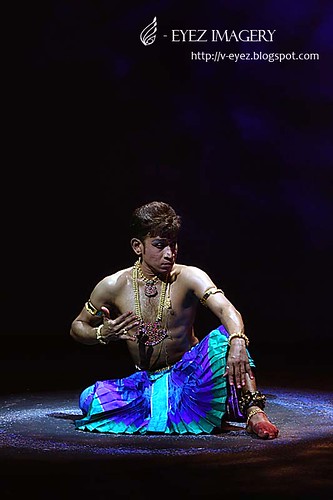
Here are the rest of the photos ;)




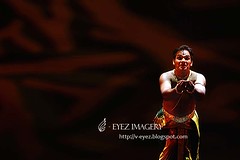
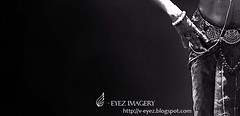
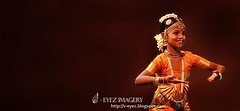
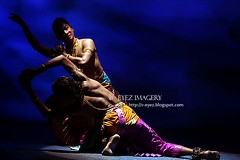
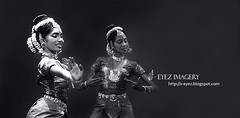




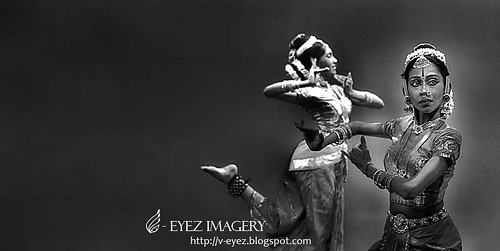

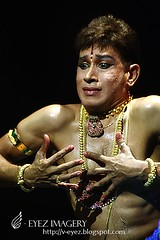




For more information on packages and schedule.
Please contact
Visithra
visithra(@)gmail.com
V-Eyez Imagery on Facebook
Labels: 2010, celebration, dance, dancer, indian, live performance, malaysia, malaysian, review, visithra
0 Comments:
Previous Posts
A love storyFeatured by Canon
FemmeCity Exhibition
Shadows Dancing
Shooting in a saree
Gorgeous
Wedding Ideas: Picking the right saree
U...
Enchanted Lover
4th Time's a Charm
Archive
May 2008July 2008
November 2008
January 2009
February 2009
March 2009
April 2009
May 2009
June 2009
July 2009
August 2009
September 2009
October 2009
November 2009
December 2009
January 2010
February 2010
March 2010
April 2010
May 2010
June 2010
July 2010
August 2010
September 2010
October 2010
November 2010
December 2010
January 2011
March 2011
April 2011
May 2011
June 2011
July 2011
August 2011
September 2011
October 2011
December 2011
February 2012
March 2012
April 2012
June 2012
August 2012
September 2012
December 2012
July 2013
August 2013
May 2014
November 2014
November 2015
March 2016
August 2016
November 2016
December 2016
January 2018